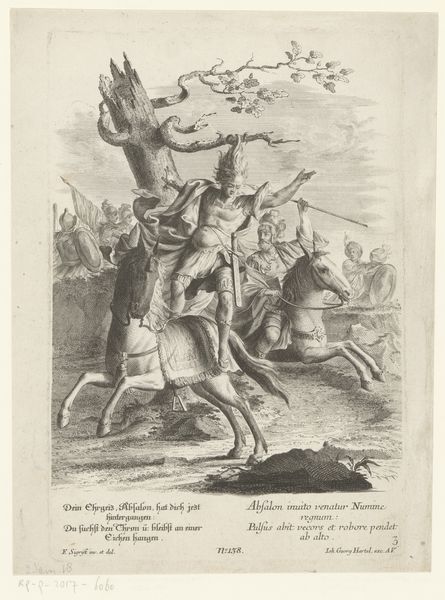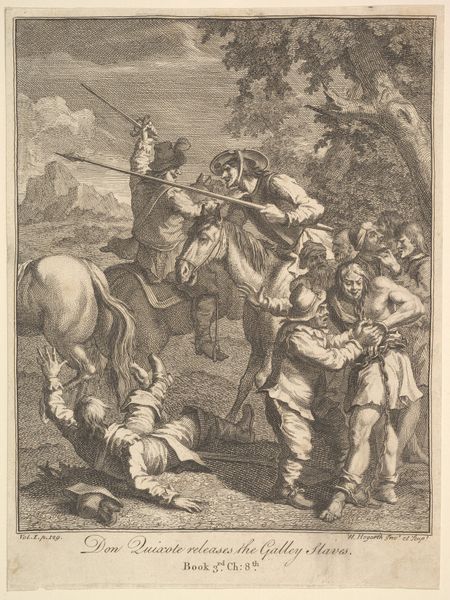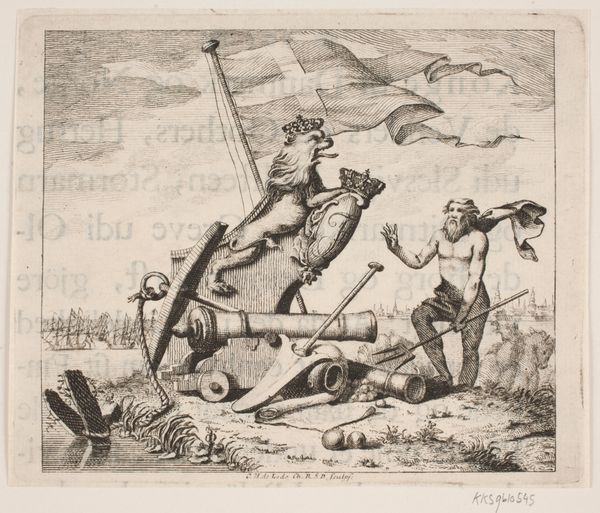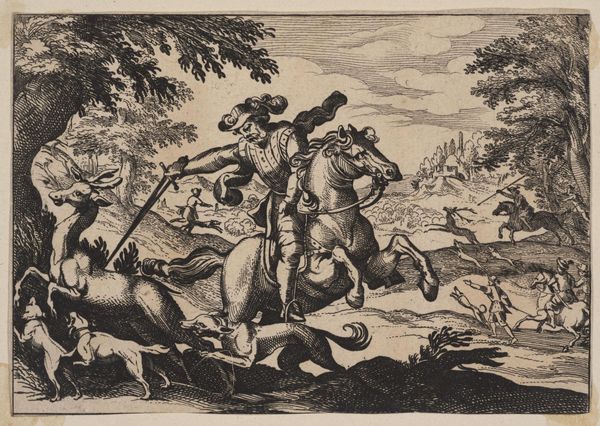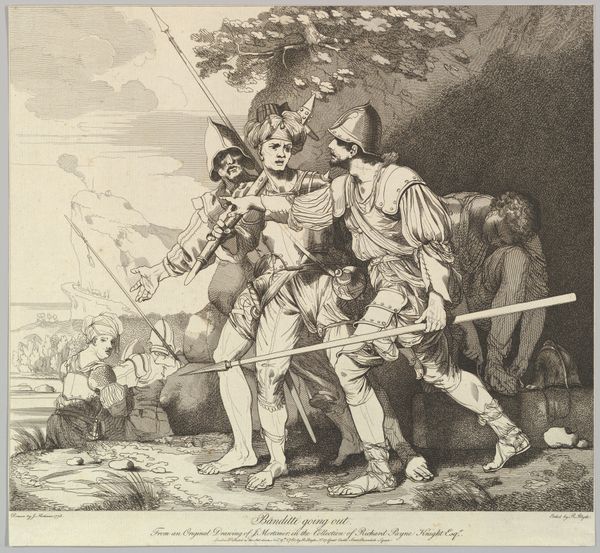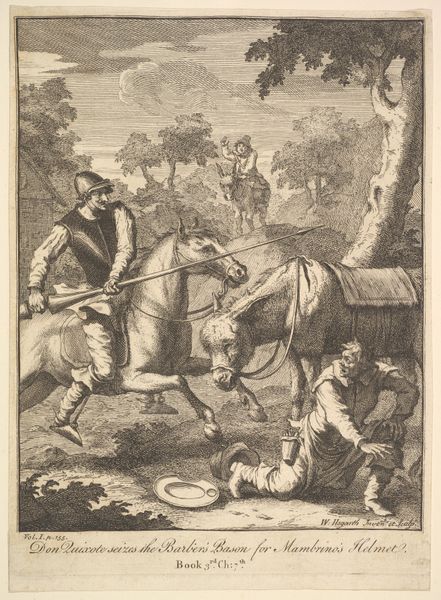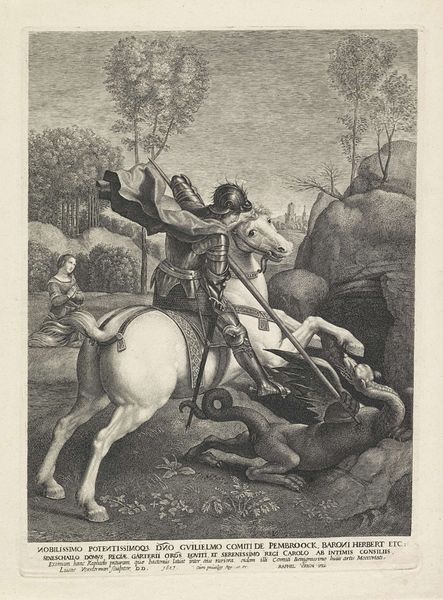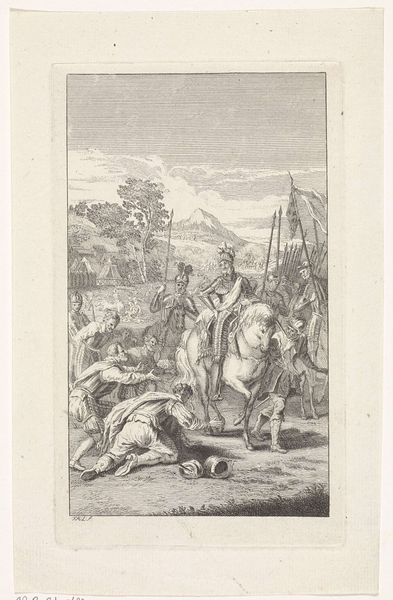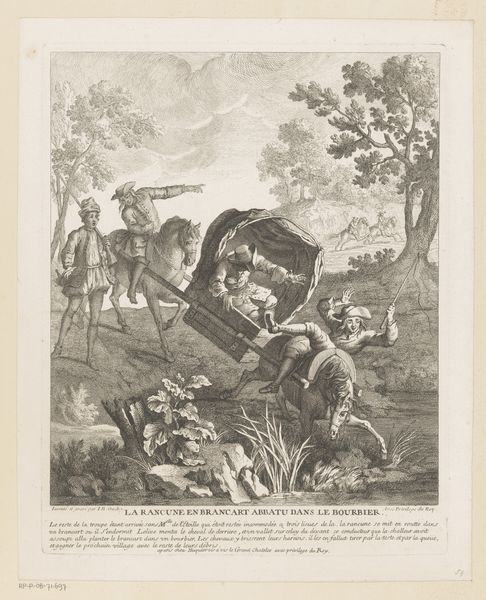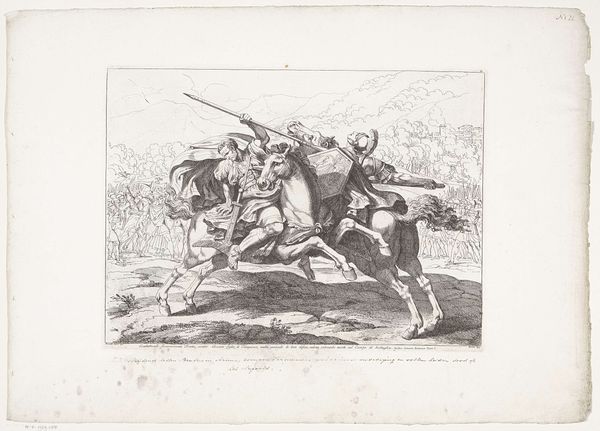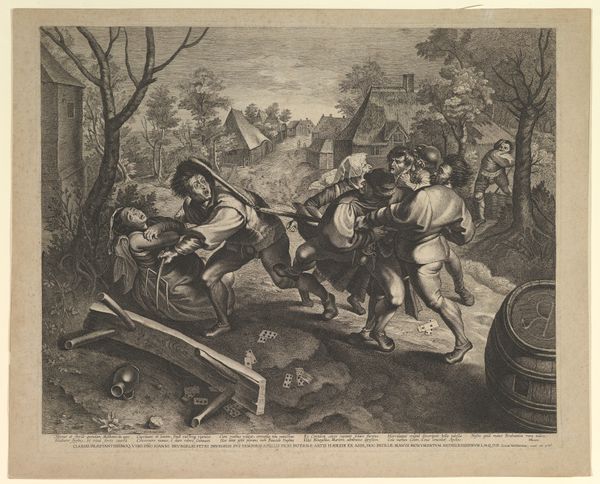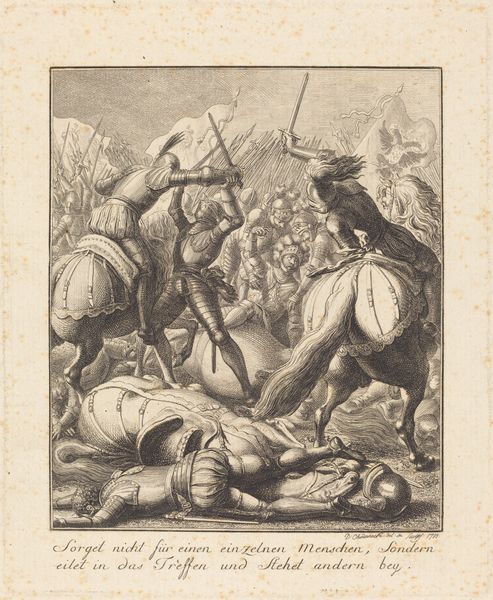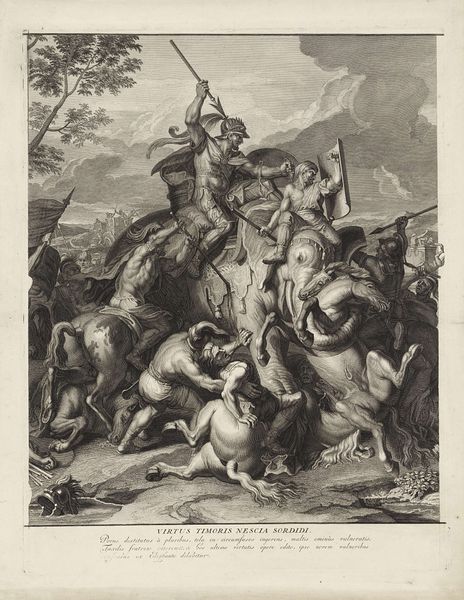
Dimensions: 525 mm (height) x 395 mm (width) (plademaal)
This print, David and Goliath, was made in 1768 by Johan Samuel Lymann. It's an engraving, meaning that Lymann used a sharp tool to cut lines into a metal plate, which was then inked and printed. The linear quality of the engraving allows for the depiction of intricate details such as the texture of Goliath's armor and the landscape. The stark contrast between light and shadow, achieved through the density and direction of engraved lines, enhances the dramatic tension of the scene. Engraving was a laborious and highly skilled process. In the 18th century, prints were a primary means of disseminating images and ideas, often serving as reproductions of paintings for a wider audience. This print testifies to the labor involved in its creation, reflecting the cultural value placed on skilled handcraft during that period. Consider the social context: Prints like these circulated widely, reinforcing shared cultural narratives while also showcasing the engraver's technical prowess.
Comments
No comments
Be the first to comment and join the conversation on the ultimate creative platform.
